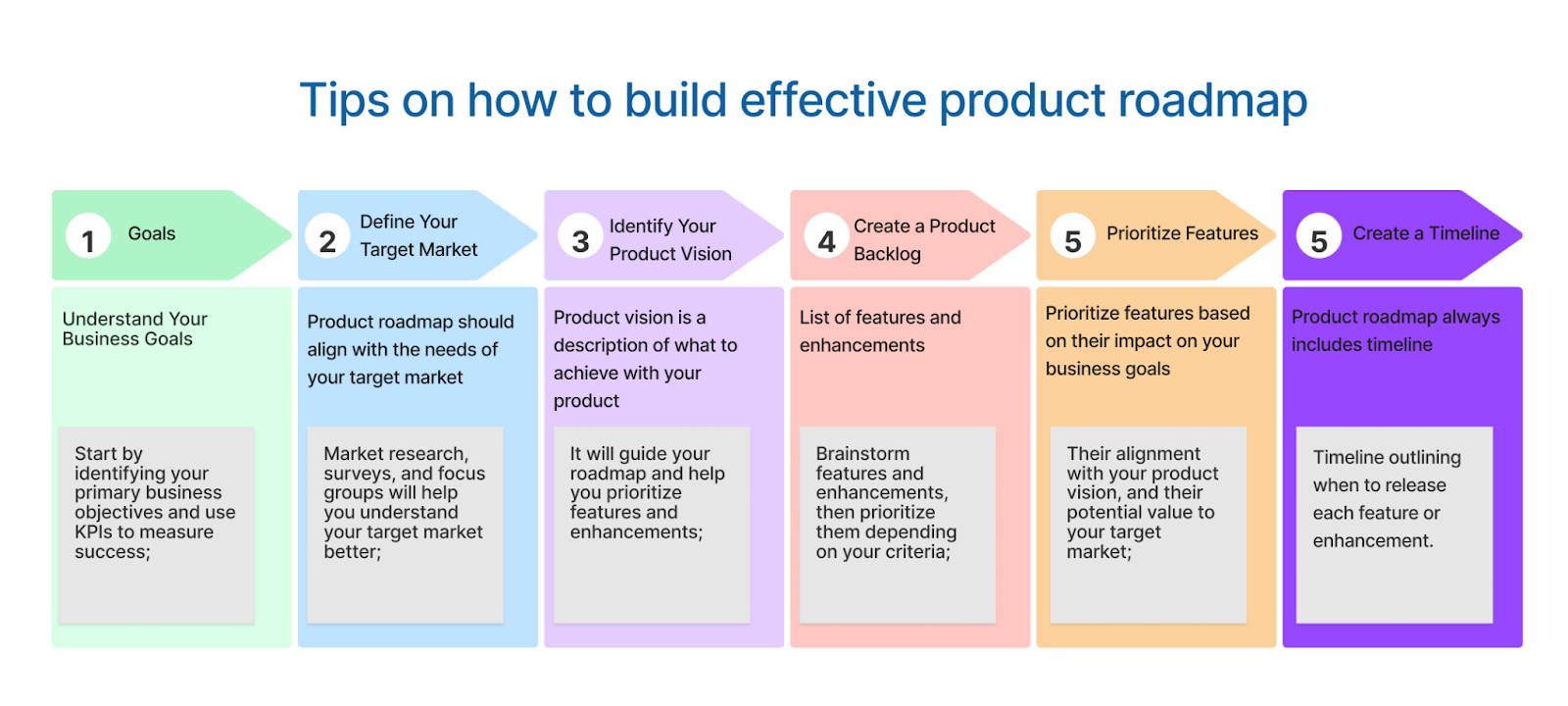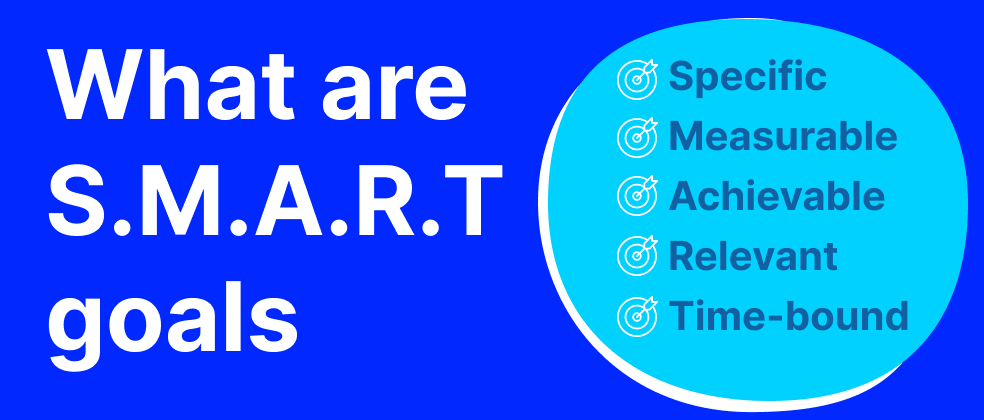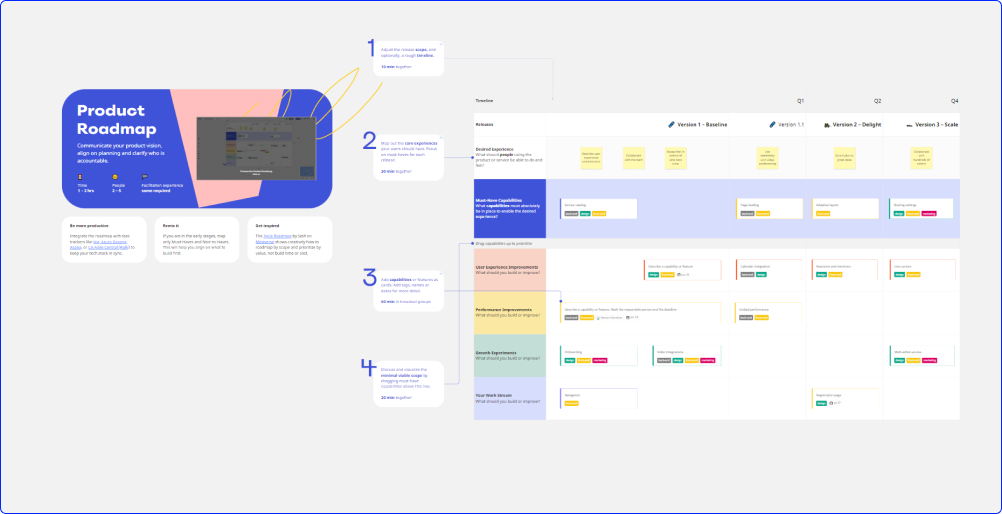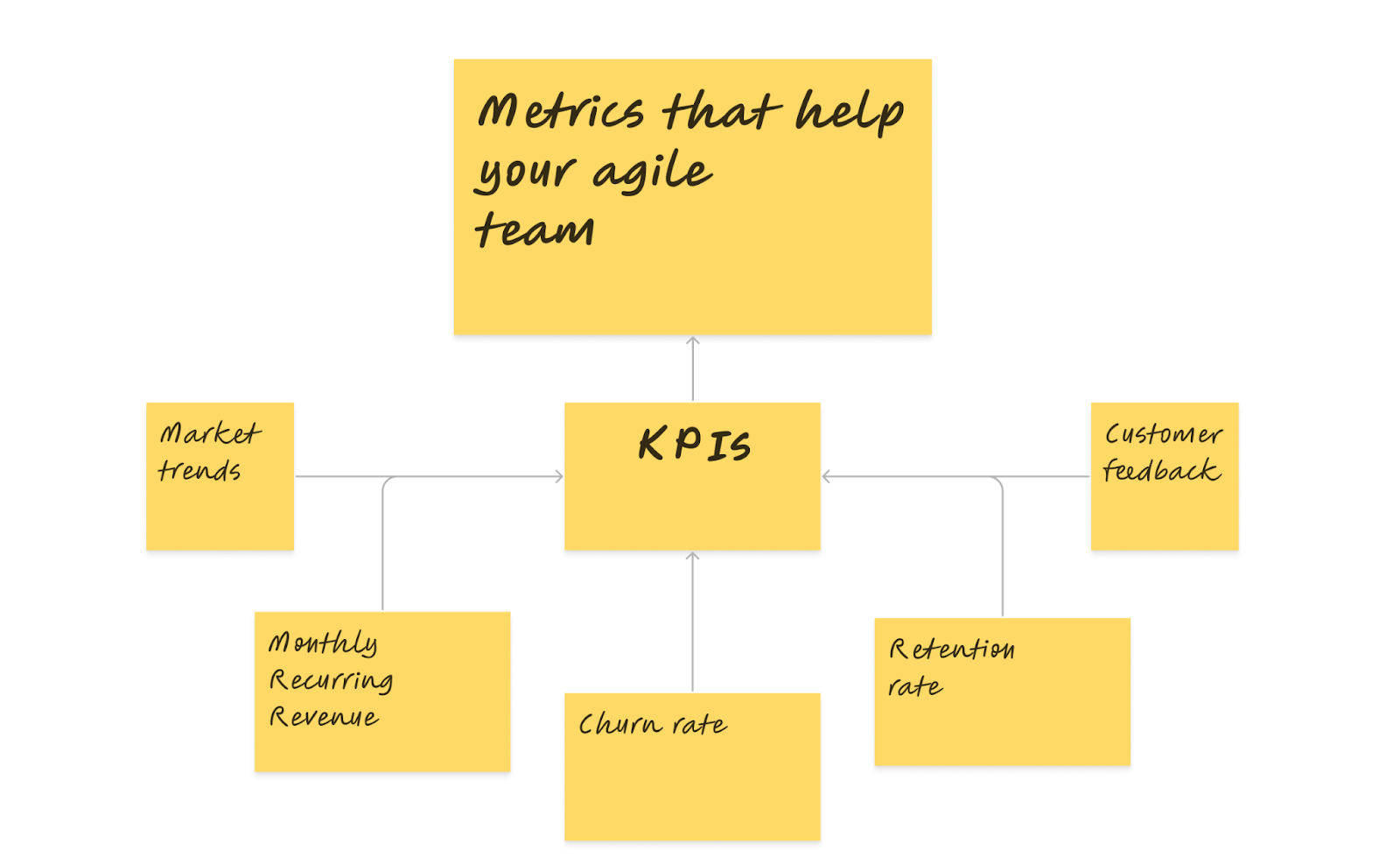How to Create a Product Roadmap That Aligns with Your Business Goals
Have you ever wondered if your product vision is correct? Are you confident that your product roadmap aligns with your business goals? Setting priorities, KPIs, and long-term goals can be challenging, especially when your team develops complex software projects. That's where product roadmaps come in handy. With this all-in-one visual tool, you can easily handle even the most complicated projects.
Still skeptical? Does an effective roadmap matter? Please take a moment to read this short guide, where we explain everything you need to know about product roadmaps.
What Is a Roadmap and Why Should It Be Aligned With Business Goals?
It is a strategic document showing a product's path and goals and offers the features, timeline, and resources needed to reach those goals. It helps align product development with business goals and customer needs and is a communication tool between internal teams and external stakeholders.
Product roadmap defines that the product development process includes the company's strategic goals and helps to:
- Focus efforts and resources on the project contributing to the business strategy;
- Identify potential conflicts or dependencies between different projects and adjust priorities accordingly;
- Set clear expectations for all stakeholders involved in the product development process;
- It makes your team (including development, marketing, and selling departments) understand what contribution they have to make to the project.
How to Create a Roadmap?
Creating a product roadmap can be daunting for a business owner or product manager. Let's consider the steps you can take to build an effective product roadmap:
- Understand Your Business Goals. Before you begin creating a product roadmap, it's essential to have a clear understanding of your business goals. Start by identifying your primary business objectives and use KPIs to measure success;
- Define Your Target Market. Your product roadmap should also align with the needs of your target market, to understand the pain points of your potential customers and create solutions that meet their needs. Market research, surveys, and focus groups will help you understand your target market better;
- Identify Your Product Vision. Your product vision is a high-level description of what you want to achieve with your product. It will guide your roadmap and help you prioritize features and enhancements;
- Create a Product Backlog. It is a list of features and enhancements that you plan to include in your product. It should be prioritized based on business value and impact on your target market. Start by brainstorming all the possible features and enhancements, then prioritize them depending on established criteria;
- Prioritize Features. Prioritizing features is critical to creating an effective product roadmap. You should prioritize features based on their impact on your business goals, their alignment with your product vision, and their potential value to your target market;
- Create a Timeline. Your product roadmap should include a timeline outlining when to release each feature or enhancement.

What are SMART Goals?
SMART goals are a framework for setting objectives that are Specific, Measurable, Achievable, Relevant, and Time-bound. This framework helps understand that goals are clear, actionable, and aligned with business objectives.
Examples of business goals:
- Increase revenue by 25% in the next fiscal year by launching a new product line;
- Reduce operational costs by 10% in the next quarter by streamlining internal processes and reducing waste;
- Next year, increase market share by 7% by expanding into new geographic regions or customer segments;
- Improve customer satisfaction ratings by 15% within the next six months by introducing new features and improving user experience.
By aligning a product roadmap with business goals and using SMART goal setting, companies can make sure that their product development efforts are focused, measurable, and aligned with the company's overall strategic goals.

2 types of market research
As a business owner, you want to get updates on data and information to support every decision. It is where marketing research comes in. Marketing research collects and analyzes data to help businesses make smart decisions about specific features, services, and product strategies.
With the help of marketing research, you can create a roadmap for your business that will help you stay on track and achieve your goals.
The research involves collecting data from various sources, such as customers, competitors, and industry experts.
There are two main marketing research types: primary and secondary.
- Primary research is when you get information directly from the people you want to reach through surveys, interviews, focus groups, or just by watching what they do;
- Secondary research is when you look at the information that someone else has already gathered, like industry reports, government publications, or analyses of your competitors.
By understanding the basics of marketing research, the different types of research methods, and how to use insights to improve your marketing strategy, you can take your business to the next level and achieve not only short-term, but long-term success.
How to develop an effective product strategy?
A product strategy is a high-level plan outlining how to achieve your product vision. It includes the different elements of your product, such as features, pricing, and positioning. Developing a product strategy helps your product roadmap follow your business goals.
The different elements of a product strategy include:
- Product Vision: A clear and concise description of what you want to achieve with your product;
- Target Market: A defined group of people who have specific needs and preferences that your product can meet;
- Value Proposition: A statement that explains why your product has USP (unique selling proposition) and values to your target market;
- Positioning: How you will position your product in the market relative to your competitors.
- Pricing Strategy: How you will price your product to achieve your business goals and meet the needs of your target market;
- Distribution Strategy: How to distribute your product to reach your target market.
How to Prioritize Features
The process involves selecting the essential features in your product roadmap based on their impact on your business goals, alignment with your product vision, and potential value to your target market.
One method for prioritizing features is the MoSCoW method. This method involves categorizing features into four groups:
- Must-Have. Features that are essential for the product to be viable;
- Should-Have. Features that are important but optional;
- Could-Have. Features that are desirable but not essential;
- Won't-Have. Features that will be excluded from the product roadmap.
Another method for prioritizing features is the Kano model. This model categorizes features into three groups:
- Basic Needs. Features that are expected and necessary for the product to be viable;
- Performance Needs. Features that improve the product's performance and provide a competitive advantage;
- Excitement Needs. Features that surprise and delight customers, providing a unique selling point for the product.
Designing a successful product roadmap involves more than merely prioritizing features. It requires prioritization at various levels, including strategy, architecture, release, and goals.
- At the strategy level, prioritizing high-level initiatives is necessary for the product's success.
- On the other hand, architecture prioritization involves weighing platform technologies, scalability considerations, interoperability challenges, and the like.
- Release prioritization requires prioritizing sprints, features, user stories, epics, and bugs.
- Finally, at the level of the goals, prioritization involves selecting the most important metrics, Objectives and Key Results (OKRs), and Key Performance Indicators (KPIs) to measure and track progress toward the objectives.
In each level, prioritization is a complex process that necessitates combining data, instinct, and consensus among product management.
How to create a timeline for your product roadmap
If you want to create a timeline for your product roadmap, follow these steps:
- Identify the key milestones for your product, such as product launches or significant feature releases;
- Estimate the time required to complete each milestone and its associated features;
- Determine the dependencies between features and milestones;
- Allocate resources and estimate the time required to complete each feature;
- Develop a timeline that outlines when each feature and milestone will be completed and released.
Why it's important to involve stakeholders in the roadmap development process
When creating a product roadmap important by all means to launch stakeholders into the process and monitor and adjust the roadmap as needed:
- Stakeholders can provide valuable insights into customer needs, market trends, and business goals;
- Involving stakeholders ensures everyone is on the same page and understands the product development process;
- Stakeholders can help identify potential roadblocks and provide feedback to help improve the product roadmap.
And we mean by stakeholders:
- Our customers. To understand their needs and preferences;
- Product managers. To provide a product management process;
- Developers. To provide technical expertise;
- Marketing teams. To ensure the product aligns with branding and messaging;
- Sales teams. To provide insights into customer feedback and sales goals.

Product roadmap template by Miro platform
Metrics to measure a success
Monitoring and adjusting your product roadmap is equally essential to be sure that your company means business and delivers the right product to your customers:
- As you can identify any gaps in your product development process and adjust your roadmap accordingly to fill those gaps;
- It lets you respond quickly to changes in the market. The market constantly evolves, and customer needs and preferences are always changing;
- It helps estimate the competition in your niche and react to any changes immediately.
Setting up metrics for your product roadmap is an important step that gives you a clear and measurable way to see if your product development aligns with your business goals. However, not all metrics have equal value. One should be cautious of "vanity metrics," which may look impressive and provide a sense of gratification but do not contribute meaningfully to the success of your business. Examples of vanity metrics could be the number of social media followers, website page views, or social shares.
Metrics that help your agile team have a real picture about your product:
- Product metrics and Key Performance Indicators (KPIs) outlined in your product roadmap give you a more comprehensive understanding of your progress. The metrics you select will depend on the purpose of your roadmap. For example, you may opt for metrics that are oriented toward customer needs or business requirements;
- Monthly Recurring Revenue (MRR) is an excellent way to determine whether your revenue is increasing due to these initiatives;
- Churn rate, on the other hand, can help you identify if your product roadmap planning has improved your retention rate;
- Measuring product adoption can help determine if your public roadmap generates excitement among potential customers about your product's future;
- Gather customer feedback to identify improvement areas and adjust the product roadmap accordingly;
- Check market trends to stay informed and adjust the product roadmap to remain competitive and meet evolving customer needs.

Summary
Aligning your product roadmap with your business goals is vital for the success of both the product and the business. It is important to involve stakeholders, such as customers, product managers, developers, marketing, and sales teams. They can give important information, make sure everyone is on the same page, and help find possible problems.
Monitoring and adjusting the product roadmap is also crucial. First, you should monitor metrics. Then, adjust the product roadmap to stay competitive.













